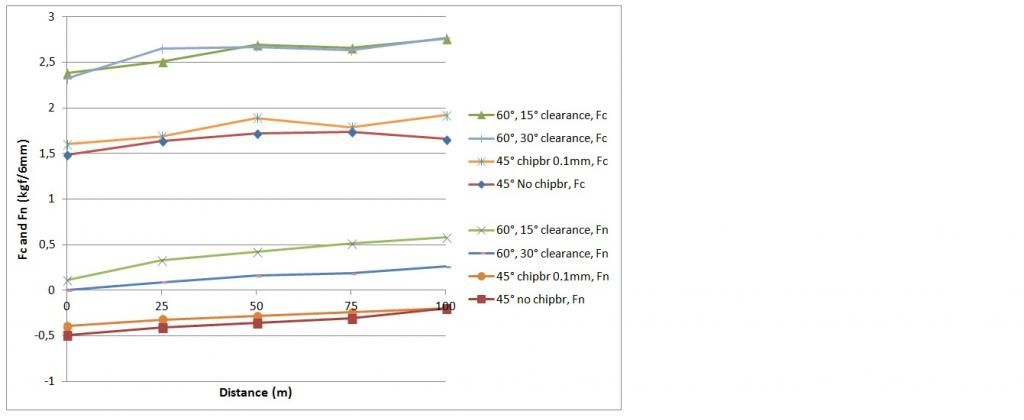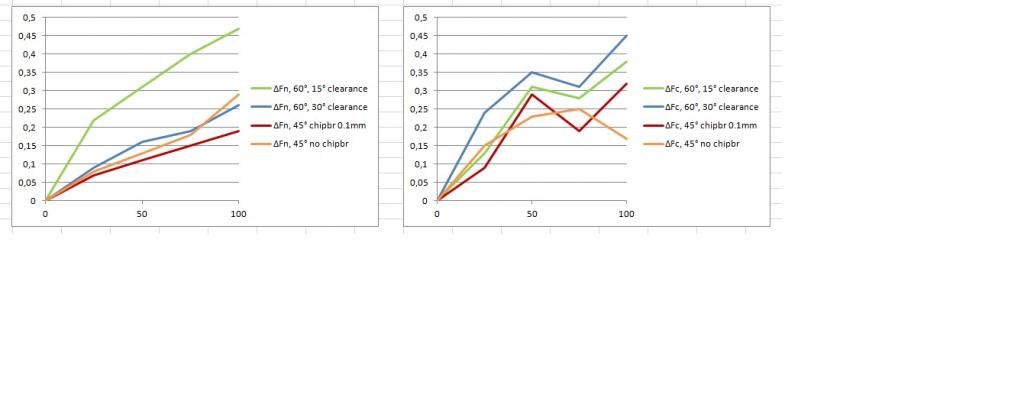In answer to my article about the forces measured in high angle planes and double iron planes (http://planetuning.infillplane.com/h...pbreakers.html), Don McConnell posted this objection:
There are a handful of difficulties/issues which are inherent in this kind of research, and I'm not completely sanguine that those have been successfully addressed in this research. And I'm not entirely sure how I would address them. But I'll forego that discussion in order to get to the basic flaw I see in the design of this research. As I read the article, Kees, your basic preparation of the iron was to grind at 25º and hone at 30º, resulting in an included angle of 30º for the iron when used at common pitch and with a cap iron. It then seems that you simulated the higher angles of attack by adding a back bevel of 5º, 10º and 15º, which would leave included angles of 35º, 40º and 45º. If this is the case, it is not analogous to an iron prepared with a 30º included angle and bedded at 50º, 55º and 60º, respectively, as would have been done with the 18th century single iron planes with higher bed angles. In other words, you've introduced a variable (actually two, with the subsequent difference in relief, or clearance, angles), which you have not controlled for at all. I believe this brings into question all of the comparative data you've generated, at least as it relates to your primary thesis.
I could answer that his objection was only valid for the second part of my research. The first part where forces are measured with a sharp blade, have all been done with high bedding angles, thus also with clearance angles normally found in 18th century high angle single iron planes. But the second part of the article adresses the wear around the edge and its result on the forces measured. Here I indeed choose to use backbevels. So this is a valid objection, especially because the wear of the blade creates a convex wearbevel on the clearance side which could very well be influenced by the clearance angle.
In fact I had done measurements with a plane with a 60 degree bedding, but they weren't a succes. The plane was too small and didn't register very well on the fence of my planing beam. So I had to make a new one.
foto (4).jpg
Then I had to find some time to do measurements with this new plane and process the results.
This I will call diagram 1. It shows how the forces develop over 100 meter planing distance.
This is diagram 2. It shows how much the forces CHANGE over 100 meter planing distance.
The cutting force Fc is the one which is horizontal in a bench plane and which you can feel when pushing the plane. The other force is the normal force Fn, which is perpendicular to the wood surface. When the blade is sharp this is the force of the shaving pressing down on the edge and when the edge dulls this force changes because the convex wearbevel tries to push the edge out of the wood.
When looking at diagram 2 first, it is quite obvious that the extra clearance angle helps to avoid the rapid increase of Fn in the 60 degree plane with only 15 degree clearance. The other values in this diagram seem to suggest that the wear rate of any high angle plane is higher then the double iron plane. But the measured differences are very small, and start to come into the area of the accuracy of the measuring machine. So, based on these results I cannot conclude that a high angle plane wears faster then a double iron plane. I would need much more test runs. The only valid conclusion I can make is that a high angle plane certainly doesn't wear less then a double iron plane.
That brings us back to diagram 1 and to the 18th century woodworker who was testdriving one of these new double iron planes. And this diagram sais it all. A proparly adjusted double iron handplane is easier to push, has a stronger negative normal force which pulls the blade into the wood and this advantage doesn't change when the edge wears.
We can add another conclusion. A high cutting angle with only 15 degree clearance is not an ideal combination when you want to maximise the life of your edge.
I hope this answers your concerns Don.






 Reply With Quote
Reply With Quote




